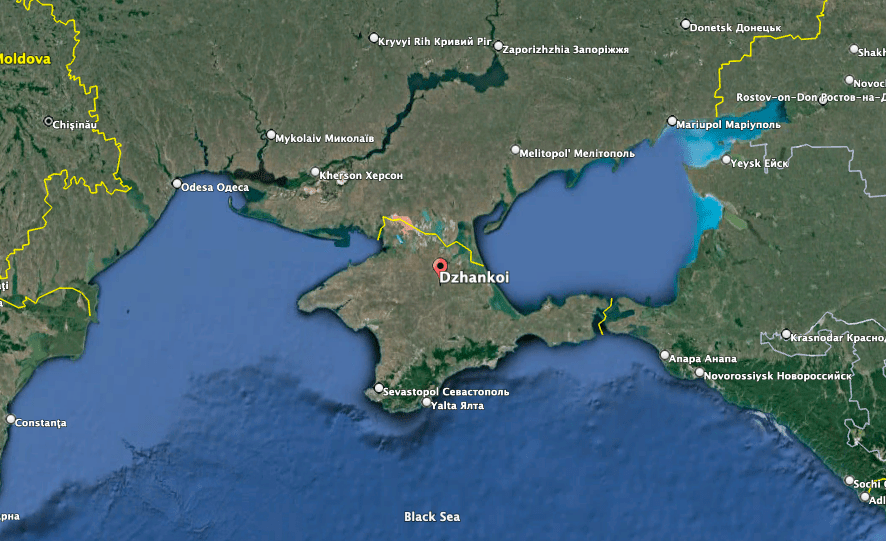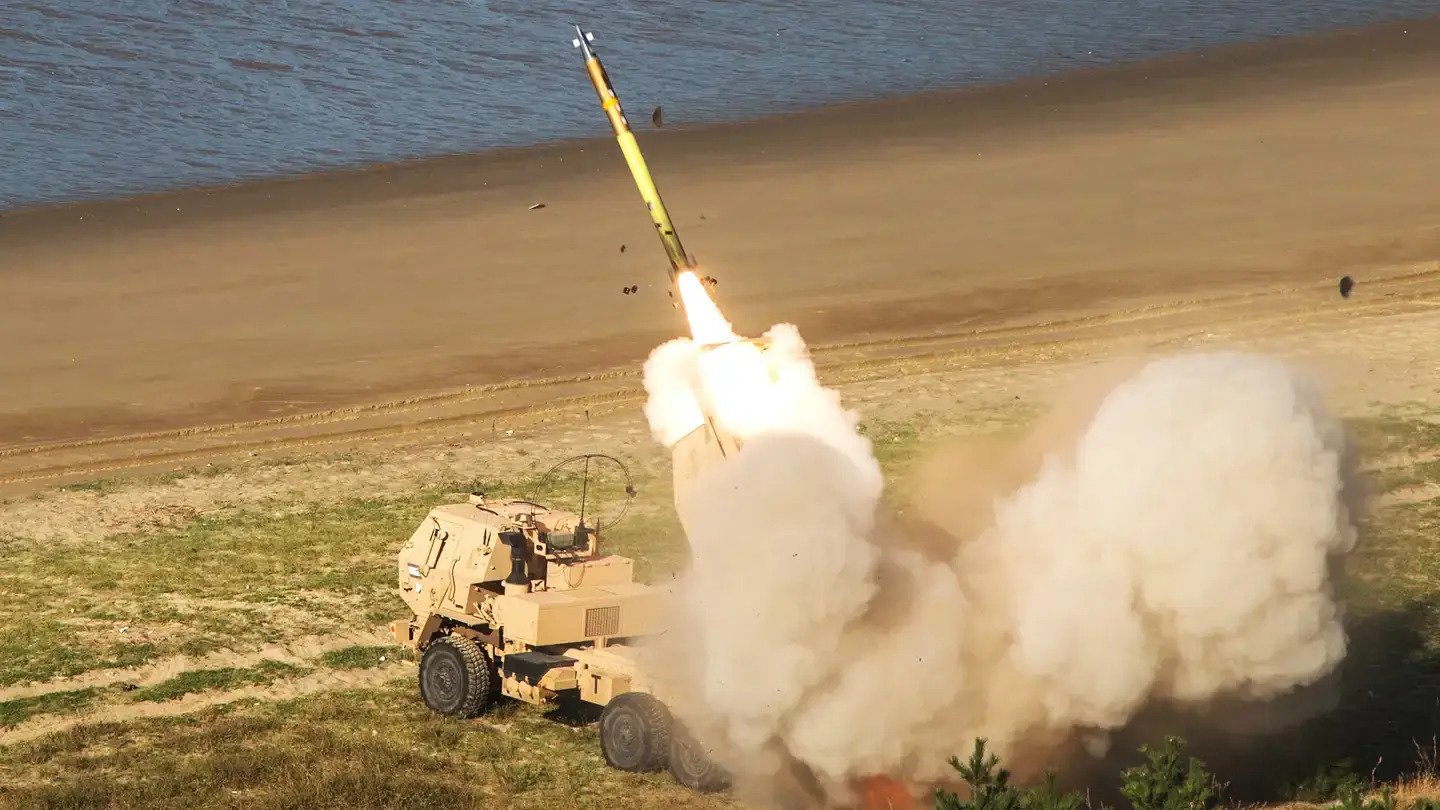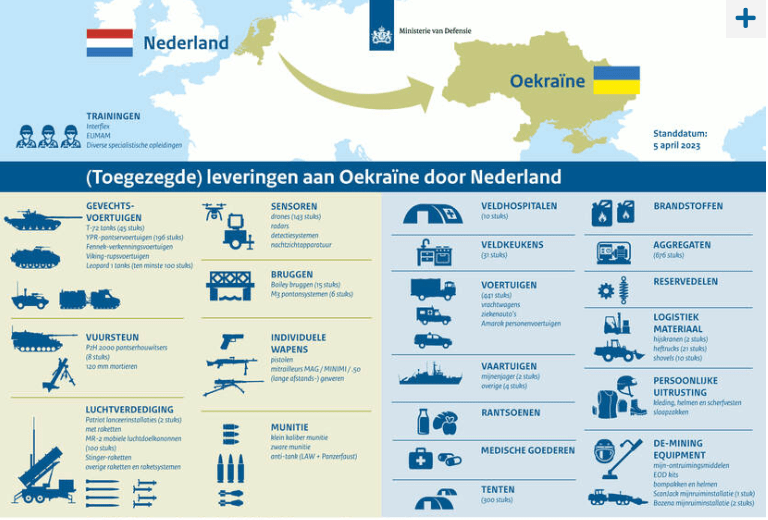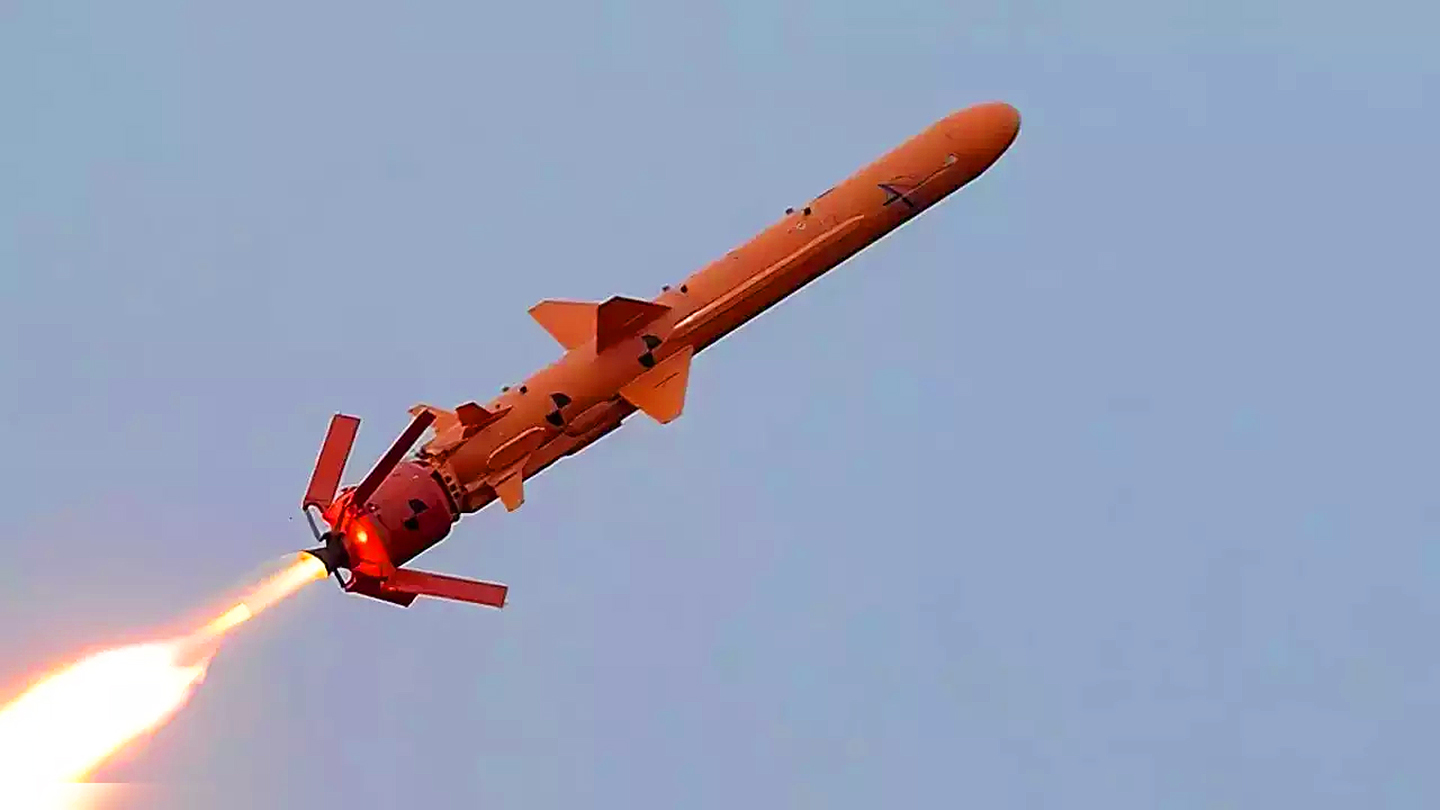A top Ukrainian official on Friday said that no weapon allowed by international law was off the table when it comes to attacking Crimea and hinted that some recent explosions there might be the result of experimental weapons.
“Crimea is the territory of Ukraine, and we will test and use there any weapons not prohibited by international laws that will help liberate our territories,” Secretary of the National Security and Defense Council Oleksiy Danilov said in a tweet Friday.
Speaking on Ukrainian national television Friday, Danilov hinted that some of the explosions in Crimea we have written about previously could be the result of “new types” of weapons.
“Therefore, if there is a test of some weapon, it takes place on our territory,” he said, according to the Qirim news agency. “It is possible that the test of new types of this weapon could take place in Crimea. It is not ruled out.”
Danilov did not elaborate, but one Ukrainian defense official we spoke with said Kyiv has three current options for striking Crimea, which Kyiv wants to liberate. The outer boundary of the peninsula, occupied by Russia since 2014, is about 50 miles from Ukrainian positions in Kherson Oblast.

The first are uncrewed aerial and surface vessels. While Ukraine has attempted several attacks using those weapons on Sevastopol, headquarters of Russia’s Black Sea Fleet, the official, speaking on condition of anonymity to discuss sensitive issues, said that is becoming less of a viable option.
Aerial drones do not have enough explosives to cause serious damage and Russia has found ways of countering the uncrewed surface vessels, the official said.
Another attack vector is Ukrainian-produced rockets and donated standoff weapons like the Guided Multiple Launch Rocket Systems (GMLRS) munitions provided by the U.S. and fired by the M142 High Mobility Artillery Rocket Systems, or HIMARS and the M270 Multiple Launch Rocket System (MLRS) provided to Ukraine by the U.S. and allies. Those munitions have a range of up to about 80km (about 50 miles). That’s just about enough range to hit the northernmost edge of Crimea.

The U.S. has also provided Ukraine with Ground Launched Small Diameter Bombs (GLSDB). The GLSDB has a range of around 94 miles, or 150 kilometers. That’s just about enough distance to hit the Russian airfield and rail lines at Dzhankoy that have come under attack before.
Ukraine has also developed a rocket called the Vilkha-M, a modified 7.6 meter (25-foot) long Soviet BM-30 Smerch multiple launch rocket system (MLRS) artillery rocket. The Vilkha-M has a range of 110 kilometers (68 miles) and a 300-millimeter, 485-pound warhead that can hit targets with great accuracy. You can read more about that in our coverage here.
The third method Ukraine has of striking targets in Crimea at the moment is through sabotage, the official said.
“The sabotage groups are the most reliable and probably [the] source of most of the explosions in Crimea,” the official said. “There should be a lot of potential insurgency rebel groups, fueled by Ukrainian intelligence services that provide the necessary means to do sabotage.”
The Kerch Bridge, Vladimir Putin’s prized $4 billion span linking Crimea to Russia, was attacked in October. And Ukraine has carried out sabotage attacks inside Russian territory and partisan groups have also struck inside Russia as well as Russian-occupied territory.
The official added that Ukraine is also working on a way to convert its domestically developed Neptune anti-ship missiles – used to sink the Russian Navy’s Project 1164 Slava class cruiser Moskva a year ago yesterday.
“Ukraine is working to modify Neptune missile to strike land targets,” said the official, adding that they are only designed at the moment to hit large metal objects on the sea. “A new guiding/homing system is required, but Ukrainians are working on that.”
The official said the key missing component at the moment are microchips that Ukraine is hoping to procure from the U.S. and allies.
“Once we get that, the Neptunes can hit targets 360 km (about 225 miles) away,” said the official. “We are pretty close.”
Before we get into today’s latest news from Ukraine, The War Zone readers can get caught up with our previous rolling coverage here.
The Latest
The Russians shelled the city of Sloviansk in Donetsk Oblast, killing at least one and injuring at least six, according to Andriy Yermak, head of Ukraine’s Office of the President.
Russian Su-35 “Flanker-E” jets also struck the city of Orikhiv in Zaporizhzhia Oblast, Ukrainian officials claim, damaging several homes and a school. But there were no reported casualties in that attack.
In response to Western concerns that it could provide military aid to Russia, China’s Foreign Minister Qin Gang on Friday said Beijing won’t sell weapons to either side in the all-out war, The Associated Press reported.
“Qin Gang is the highest-level Chinese official to make such an explicit statement about arms sales to Russia. He added that China would also regulate the export of items with dual civilian and military use,” AP reported.
“Regarding the export of military items, China adopts a prudent and responsible attitude,” Qin said at a news conference alongside visiting German counterpart Annalena Baerbock. “China will not provide weapons to relevant parties of the conflict, and manage and control the exports of dual-use items in accordance with laws and regulations.”
A day after the arrest of accused document leaker Air National Guard airman Jack Teixeira, The Washington Post revealed more fallout from the massive release of classified documents.
Russia’s clandestine Spetsnaz forces have been gutted by the all-out war, and it will take Moscow years to rebuild them, the newspaper reported, citing classified U.S. assessments it obtained.
“The finding, which has not been previously reported, is among a cache of sensitive materials leaked online through the messaging platform Discord,” the Post reported. “U.S. officials attributed their assessments to Russian commanders’ overreliance on the specialized units, which have been put to use as part of front-line infantry formations. Those formations, like the Ukrainians, have suffered massive numbers of dead and wounded.”
The Netherlands on Friday published a list of the equipment it has provided and promised Ukraine.
The information is updated as of April 5, 2023.
- Combat vehicles
T-72 tanks (45), YPR armored tracked vehicles (196), Fennek reconnaissance vehicles and Viking tracked vehicles. Leopard 1 tanks together with Denmark and Germany (at least 100). - Fire support systems
PzH2000 armored howitzers (8) and 120mm mortars. - Air defense systems
Patriot launchers (2 units) with associated missiles, MR-2 mobile AA guns (100 units), missiles and air defense missile systems such as the Stinger. - Individual weapons
Various machine guns, such as MAG, Minimi and .50, (long-range) rifles and pistols. - Ammunition
Various types of small caliber ammunition for individual weapons and heavy ammunition for combat vehicles and gun systems, anti-tank ammunition, such as LAW and Panzerfaust. - Sensors and observation equipment
Various types of drones and associated equipment (143 units), radar and detection systems such as ground sensors, and a total of 1,037 units of night vision equipment including brightness amplifiers and thermal imaging devices. - Bridges
Bailey bridges (15) and M3 pontoon systems (6). - Kitchens
(Mobile) field kitchens (31). - Vehicles (441)
4-ton trucks, Amarok vehicles and ambulances. - Demining equipment
Scanjack mine-clearance installation (1), Bozena mine-clearance installation (2), mine detectors, mine spikes and EOD equipment. - Vessels (6)
2 mine hunters of the Alkmaar class. - Field hospitals (10)
- Tents (300)
- Aggregates (676)
- Spare parts
For various types of vehicles and (weapon) systems. - Logistics material
Such as cranes (2), shovels (10) and forklift trucks (21). - Personal equipment
Such as clothing, helmets, shard vests. - Rations
- Medical goods
Such as personal first aid kits and medicine. - Fuels
Such as diesel and kerosene.

Russia’s Lancet loitering munitions continue to be a potent weapon, in this case reportedly destroying a Ukrainian 79K6 Pelican radar system.
The all-out war has been devastating not just to Ukraine’s military, civilian population and infrastructure, but also to its ecology.
The New York Times published snapshots from The Beauty Of Ukraine, a book that captures beautiful landscapes permanently scarred by the conflict.
As the invasion began, the editorial staff at C.P. Publishing in Kyiv was toiling away at the book of landscape photography by the Odesa-born Yevhen Samuchenko, when Russian forces invaded near the Ukrainian capital and forced them to flee, the Times reported.
“Many places featured in this book have been severely damaged during the war since its outbreak,” Linda Bondar writes in her foreword. In addition to the hundreds of thousands of Ukrainian lives lost, she adds, “nature has also suffered from this brutal and senseless war.”
Ukraine’s farmers have also suffered badly during this conflict. Here is a thread on how one farmer, Volodymyr Tanyk, “is fighting back, rebuilding, and de-mining his land with incredible determination.”
The Russians continue to roll out Mad Maxian weapons, in this case a 25mm 2M-3M naval gun placed atop an ATS-59G artillery tractor.
Drone footage shows one Russian soldier running for his life and flashing a picture while curled up in the fetal position seemingly about to meet his doom. A bizarre clip showing the horrors on the front line.
And finally, while we don’t know the fate of the infamous trench beaver, we can share this video of an owl saved during the bloody battle of Bakhmut.
That’s it for now. We’ll update this story when there is more news to report about Ukraine.
Contact the author: howard@thewarzone.com
